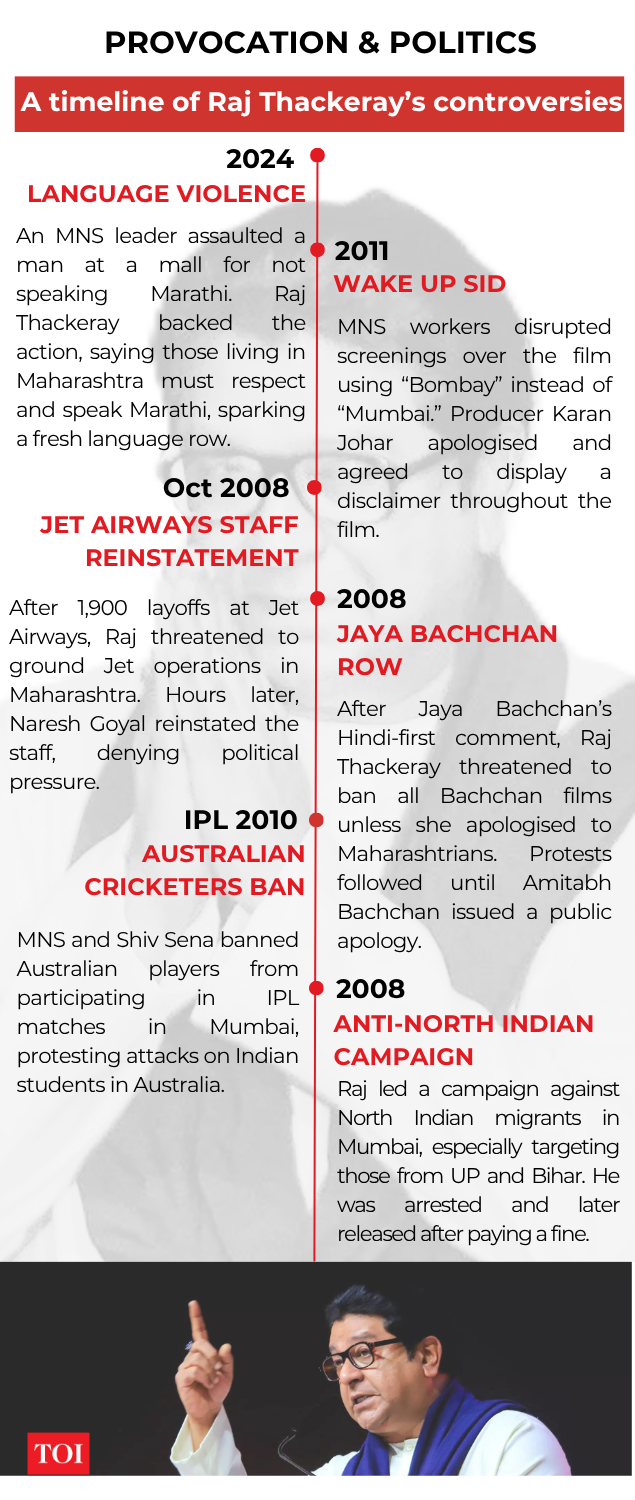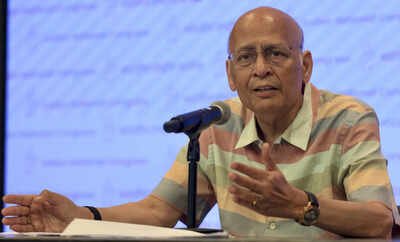📰 Quick Update: This article is sourced from reliable publishers using automation.
NEW DELHI: Is the much-hyped reunion of Thackeray cousins – Uddhav and Raj – a political masterstroke or a desperate move to survive in the changing Maharashtra landscape? Both Uddhav and Raj, who once enjoyed great political clout when Brand Thackeray was at its peak in state politics, are today struggling to stay relevant in an increasingly fragmented political space.While Uddhav, who lost the original party name and symbol to Eknath Shinde, has been marginalised after his party’s drubbing in the last assembly elections, Raj Thackeray has failed to take off in the last two decades despite showing a lot of promise when he started under Balasaheb. In the last assembly elections, Raj could not ensure victory for his son Amit Thackeray who contested from Mahim contituency and lost to Shiv Sena (UBT) candidate Mahesh Sawant.In a symbolic gesture that adds fuel to the speculation, Raj Thackeray visited Uddhav Thackeray at his residence, Matoshree, on Sunday to extend birthday greetings. The visit came just weeks after the cousins shared the stage at the ‘Awaz Marathicha’ rally, signalling what many believe to be the beginning of a tentative political rapprochement.Also read – Hugs and roses: Raj Thackeray enters Matoshree after 13 years to greet Uddhav on birthdayThe immediate trigger for this new-found bonhomie between cousins is perhaps the BMC elections. The Shiv Sena has ruled the BMC for over two decades, consistently emerging as the single largest party since 2002. In the 2002 elections, the Sena won 97 seats and retained power with the BJP’s support. Though its tally dropped to 84 in 2007, it managed to hold on to the civic body. The 2012 results saw a further dip to 75 seats, but the party still remained on top, again with BJP’s backing. Even in 2017, despite a fierce contest and BJP closing the gap with 82 seats to Sena’s 84, the Shiv Sena maintained its grip on the country’s richest municipal corporation.However, ground realities have changed. BJP is now a very strong force in Maharashtra and Shiv Sena is under the control of Shinde. So, the upcoming elections will be a litmus test for the Thackerays to stay relevant in the politics of Mumbai.For Uddhav Thackeray, the stakes could not be higher. After losing the original Shiv Sena to Eknath Shinde’s rebellion in 2022 and rebranding under the Shiv Sena (UBT) banner, Uddhav has struggled to hold ground even in his stronghold, Mumbai. His shifting alliances — from the BJP-led NDA to the Congress-NCP front — yielded diminishing returns, both in the Vidhan Sabha and Lok Sabha elections. Now, by extending an olive branch to his cousin, he hopes to cobble together enough support to at least remain electorally viable, if not victorious.His faction’s poor performance in the Lok Sabha and Vidhan Sabha elections and a weakened grassroots network have pushed him into a corner. The outreach to Raj Thackeray is being seen as a tactical, if not desperate, move to consolidate whatever remains of the Thackeray legacy.Uddhav’s troubles began with the political coup engineered by Shinde, who walked away with over 40 MLAs, aligning with the BJP and ultimately becoming Chief Minister. The episode cost Uddhav not only the CM post but also the party symbol and loyal cadre. Since then, Shinde’s portrayal of a humble, working-class leader with anti-dynasty credentials has further eroded Uddhav’s political base.Once the unchallenged force in Mumbai, Uddhav’s Shiv Sena (UBT) has struggled in recent elections, losing both political momentum and ground-level cadre support. His reunion with Raj is now being seen as a tactical, even desperate, move to consolidate what remains of the Thackeray brand in Maharashtra.Once hailed as Balasaheb Thackeray’s ideological heir, the Maharashtra Navnirman Sena (MNS) chief, who broke away from Shiv Sena in 2005 after being sidelined in favour of Uddhav, has remained on the political fringes for over a decade. His party failed to build on its early momentum, and even his son Amit Thackeray’s attempted electoral debut failed.Despite efforts to stay relevant — including Amit’s debut and a potential alliance with the BJP — Raj has struggled to rebuild MNS’s influence. A proposed tie-up with the BJP fizzled out ahead of the last assembly elections, further underlining the party’s weakening foothold.Now, Raj is doubling down on Balasaheb-style aggression. His recent rhetoric, including provocative lines like “dooba dooba ke maarenge” and warnings against Hindi imposition, appears aimed at reigniting Marathi pride. He has openly defended MNS workers accused of violence against non-Marathi speakers, reviving the polarising identity politics that once defined Mumbai in the 1990s. However, the city’s changing social and linguistic fabric has diluted the impact of such hardline positions.Initially, Raj’s firebrand oratory and Marathi-first politics resonated strongly with urban voters, especially in Mumbai, but the momentum waned as the city’s demographics and political priorities evolved. His repeated attempts to revive MNS’s base have yielded little success, and his political relevance has steadily declined.In this backdrop, Raj’s visible alignment with cousin Uddhav Thackeray though unofficial and likely temporary signals a strategic recalibration. While this association may not guarantee an electoral revival, it positions Raj back into the political conversation, particularly as the Brihanmumbai Municipal Corporation (BMC) elections draw closer.

The cousins’ joint appearance may be a trial balloon rather than a formal alliance. Still, in terms of political optics, it sends a powerful message — especially at a time when Uddhav has been visibly warming up to BJP leader and CM Devendra Fadnavis. This has fuelled speculation about a possible re-entry into the NDA fold, potentially displacing Shinde from the leadership equation.At the other side, Eknath Shinde, once a loyalist of Balasaheb’s Shiv Sena, has leveraged his grassroots credentials and anti-dynastic pitch to climb the political ladder. However, Shinde’s position in the NDA has also weakened after Ajit Pawar joined the alliance, effectively diluting his bargaining power. While he continues to hold numbers in the assembly and Lok Sabha, the perception that he is no longer indispensable is growing.The upcoming BMC election will serve as a crucial barometer. A weak performance by Shinde’s faction could lead to a reshuffling within the NDA, where Uddhav’s re-entry might not be ruled out. Simultaneously, Raj’s visible alignment with Uddhav may not guarantee a revival but could at least reposition him as a political player — and pave the way for his son Amit’s re-launch.Ultimately, whether the Thackeray cousins’ reunion is just an act of political theatre or the beginning of a serious strategic comeback remains to be seen. What is clear is that Maharashtra’s political equations are in flux, with legacy politics being tested by new power centres and shifting voter allegiances.The BMC election might just decide whether this family reunion becomes a new chapter or a brief photo-op in the twilight of their influence.
Source: Times of India
📝 We use smart aggregation to bring you top news in real-time.




